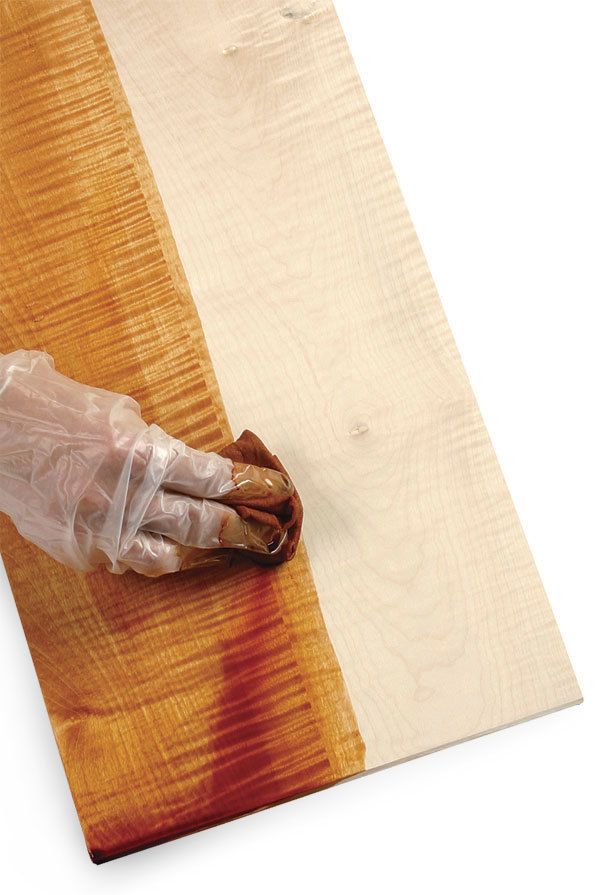Dyes Can Do It All
Color bare wood without blotching, tint topcoats, and touch up blemishes
Synopsis: Even the most seasoned woodworker gets nervous when it comes to coloring wood. After all, a piece of furniture that took months to make can be ruined in minutes if the stain doesn’t come out right. Finishing expert Teri Masaschi seeks to end that anxiety. Her advice? Switch to dyes. Unlike typical hardware-store pigmented wood stains, dyes penetrate the wood and enhance the figure without covering it. They come in a range of colors, whether you are seeking the rich tones of antique cherry or want to dye a contemporary piece bright blue. Masaschi explains the differences between waterborne, oil-, and alcohol-based powders, non-grain-raising dyes, and dye concentrates, and how to use each type.
From Fine Woodworking #190
Coloring wood strikes terror in the hearts of most woodworkers. After spending six months building a piece, potentially ruining it in an hour is a definite cause for anxiety. Much of this caution stems from bad experiences applying typical hardware-store wood stains to bare wood. These mostly pigmented stains can cause results that are too dark, blotchy, and muddy. Far from enhancing the wood, the effect is to ruin the appearance.
Rather than throw out the baby with the bathwater and forswear ever coloring wood, switch to dyes. Like pigments, dyes also are called stains, but instead of lying on top of the wood like a pigment stain, they penetrate the wood. This ability enhances wood by offering figure-revealing transparency. Dyes come in a range of colors from subtle wood tones to brilliant primaries, and they can be applied to bare wood, combined with clear coats, or used as touch-ups. Dyes come in powdered form, concentrates, and ready-to-use liquids. The trick is to know where and how to use each type.
Dye bare wood for the greatest change in color: Whether you are seeking the rich tones of antique cherry or vibrant color on a more contemporary piece, you’ll get the most impact by applying a dye to unfinished wood. However, this is something of a high risk, high reward situation.
Water-soluble dyes are your first choice— The most commonly available dyes are powders dissolved in water. Often termed aniline dyes (although no longer made from this product), water-soluble dyes provide great flexibility in how they can be mixed and also how they can be used.
Water-soluble dyes can be brushed, ragged, or sponged on, or sprayed with a spray gun or a plant mister. Their slow drying time means they can be manipulated with a damp cloth to correct uneven color, which makes them suitable for applying to large areas such as tabletops. They come in a greater range of colors than any other type of dye, and if you can’t find the perfect color you can blend two or more dissolved colors. Unlike many finishing products, dye powders have an almost infinite shelf life if kept in the dark.
For the full article, download the PDF below:
Fine Woodworking Recommended Products

Osmo Polyx-Oil

Odie's Oil

Foam Brushes























Log in or create an account to post a comment.
Sign up Log in